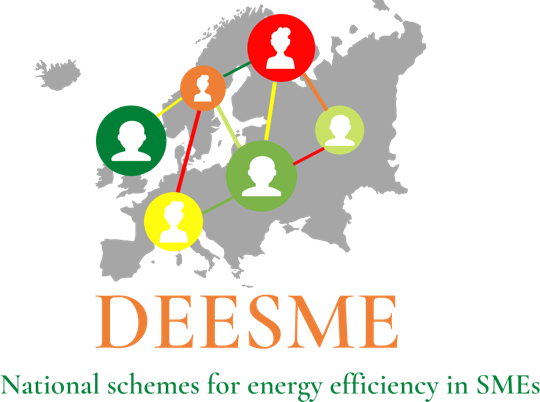ISO 50001: the pros and cons of an energy management system
The Intergovernmental Panel on Climate Change (IPCC) states that to prevent catastrophic climate impacts, global temperature rise must be kept below 1.5°C.

By Manuel Sarmento, Consultant, EcoAct, an Atos company
The Intergovernmental Panel on Climate Change (IPCC) states that to prevent catastrophic climate impacts, global temperature rise must be kept below 1.5°C. Buildings and construction alone generated about 40% of global CO2 emissions in 2018 (UK GBC). How we manage the climate impacts of our buildings is therefore crucial.
Building energy demand has increased by 7% over the last decade and is projected to increase 50% more by 2060 if no action is taken (World Green Building Council). It is also estimated that 80% of buildings we will have in 2050 have already been constructed (UK GBC). Therefore, businesses have a key role to play in helping to limit global temperature ise by ensuring that they operate responsibly and in a sustainable manner, striving to actively manage their environmental impacts, including energy usage and efficiency.
Energy inefficiency is common
A typical commercial building may not operate at its optimal level due to inefficiencies, irregular changes in building occupancy, use of older equipment, lack of investment or upkeep/maintenance, inadequacy of the building purpose, or overall high baseload. Thus, it is important to have a robust understanding of the energy that is used and how it is controlled in a building.
This is key to addressing inefficiencies, reducing consumption and associated emissions, and aligning with climate goals –as the saying goes “you cannot manage what you do not measure”.
The power of an Energy Management System
An Energy Management System (EnMS) is a framework of practical processes and procedures to assist organisations to achieve best practices relating to energy efficiency, use and consumption, through the setting and delivery of energy targets. The EnMS is usually aligned with ISO 50001, an internationally recognised standard for Energy Management Systems based on the continual improvement management system model. The ISO 50001 standard provides a means of validating a best practice approach and recognising an organisation’s commitment to energy performance management and improvement.
What are the benefits of the ISO 50001 standard?
The ISO 50001 is applicable to any organisation, regardless of its size, industry, compliance requirements and whether it is a single or multi-site organisation. The standard can lead to significant optimisation of energy resources.
The benefits of pursuing an ISO 50001 are manifold, from supporting energy reduction and improving bottom lines, to enhancing business strategies. An ISO 50001 will:
- Identify risks and opportunities: the process will help identify energy risks, areas of significant energy use, and opportunities for improvement, by providing a better understanding of the energy profile of an organisation. These opportunities, when acted upon, drive energy use reduction and increase efficiency. Improvements may be in the form of behavioural change initiatives or technological improvements which would bring down a building’s baseload. The identified risks may include aging infrastructure which may cause increased maintenance costs and disruption to operational activities;
- Achieve significant cost savings: reduction in energy usage and efficiency improvements will ultimately help to improve the bottom line. Carbon related taxation has steadily increased in the recent past, with the Climate Change Levy increasing 45% from 2018/19 alone. Therefore, reduction in energy consumption will also directly reduce the carbon taxation burden on organizations.
- Drive carbon emissions reduction through decreased energy consumption, as well as support setting and progressing against ambitious climate targets by ensuring robust and accurate energy data is being collected;
- Support compliance with environmental regulations: An ISO 50001 may be used as a compliance route for Article 8 of the EU Energy Efficiency Directive (EU EED) / ESOS in lieu of carrying out energy audits, potentially reducing costs associated with compliance requirements. It will also support requirements for other legislation such as the Streamlined Energy and Carbon Reporting (SECR) and improve voluntary sustainability reporting;
- Enhance an organization’s reputation and environmental credentials among internal and external stakeholders, providing a competitive advantage as a widely recognised environmental standard;
- Provide a potential stepping-stone to other sustainability initiatives: In our experience implementation of such a standard engages senior management and other colleagues around an environmental ambition and the positive results support future business sustainability strategies and aid swift decision making.
The cons of implementing ISO 50001
It is important, nevertheless, to recognise the potential implications and drawbacks of implementing a certified EnMS within your organization. Once externally validated, certification is subject to external surveillance audits, further supported by regular internal audits. An ISO 50001 system will also require upfront costs related to certification fees alongside human resource for the regular maintenance of the documentation processes and overall system.
These may pose significant time, resource, and cost commitments that might make it prohibitive for some organisations to strive for an EnMS certified pathway. However, mandatory compliance also requires a level of commitment and rigorous verification processes that most organisations cannot entirely avoid. The investment in the implementation of this standard will therefore diminish the time and resource requirements to fulfil these compliance obligations.
It is also worth considering that the requirement for continuous improvement of your energy management may be easier to be achieved at first, with low cost or no cost initiatives being implemented. This may become more complex and costly as initial opportunities are realised, increasing the intricacy of maintaining the system validation. But to ultimately meet our urgent climate goals, businesses are going to be under increasing pressure to tackle more than the low hanging fruit. Moreover, the cost savings observed for those more complex opportunities should greatly out weight the investment for most organisations.
The organizational context dictates how these implications impact the implementation of an ISO 50001. It is crucial therefore that these variables are considered within the organisational context of your company.
Do we have to gain certification?
The ISO 50001 certification route to an EnMS is not obligatory. It is possible for an organisation to adopt its guiding principles and align its internal EnMS to the ISO structure without external certification. Regardless if certified or not, the benefits of implementing the standard can still be observed through the implementation of a best practice driven EnMs. The benefits of gaining a better understanding of energy consumption, identification of opportunities for improvement, and engagement with senior management can still be observed through an non-certified EnMS, ultimately driving energy efficiency and carbon reductions as part of its continuous improvement mechanism. Even so, ideally, we recommend certification of an EnMS to demonstrate credibility of the established system and to externally communicate an organization’s energy management credentials.
It is clear that energy management is key for any organisation to reduce costs, drive efficiency, and to support the organisation, and the sector overall, to align itself with the Paris Agreement goals of a 1.5°C warming scenario. Regular monitoring, reporting, and actioning on energy usage are the basis of a good business strategy to ensure an organisation is prepared for any future requirement, be it compliance regulations or stakeholder interests.
